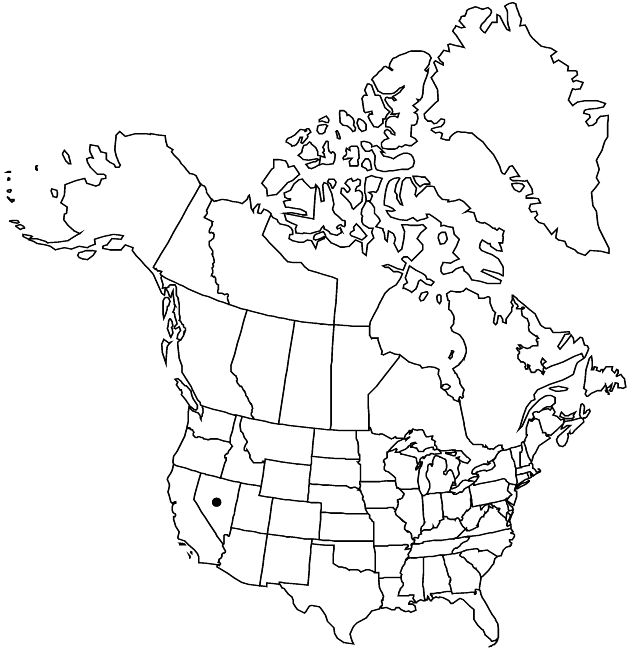Chrysothamnus eremobius
Brittonia 35: 23, fig. 1. 1983.
Subshrubs, 10–30 cm; with woody, highly branched caudices, bark whitish to dark gray, finely ridged, ± fibrous with age. Stems erect, green becoming whitish, glabrous, ± resinous. Leaves ascending to spreading; petiolate; blades mostly 3-nerved (nerves reticulate, raised), elliptic to oblanceolate or obovate, 20–80 × (7–)10–25 mm (mostly larger basally, ± reduced distally), flat, apices acute, faces glabrous, gland-dotted. Heads in condensed, cymiform arrays, not overtopped by leaves. Involucres cylindric to turbinate, 6.5–8.8 × 1.8–2.5 mm. Phyllaries 19–24(–30) in 3–4 series, in vertical ranks, tan with apical green spot, midnerves evident distally, ovate to lanceolate, 1.5–6 × 0.7–1.5 mm, unequal, chartaceous, apices obtuse to acuminate, flat, faces glabrous. Disc florets 5(–6); corollas 4–5 mm, lobes 0.8–1.2 mm; style branches 2.2–2.7 mm, appendages 0.8–1.2 mm. Cypselae cylindric, 2.5–3 mm, faces hairy; pappi tan, 3.1–3.9 mm. 2n = 18.
Phenology: Flowering late summer–fall.
Habitat: Crevices of limestone cliffs
Elevation: 1400–1700 m
Discussion
Of conservation concern.
Chrysothamnus eremobius is known only from the Pintwater and Sheep ranges of southern Nevada.
Selected References
None.
